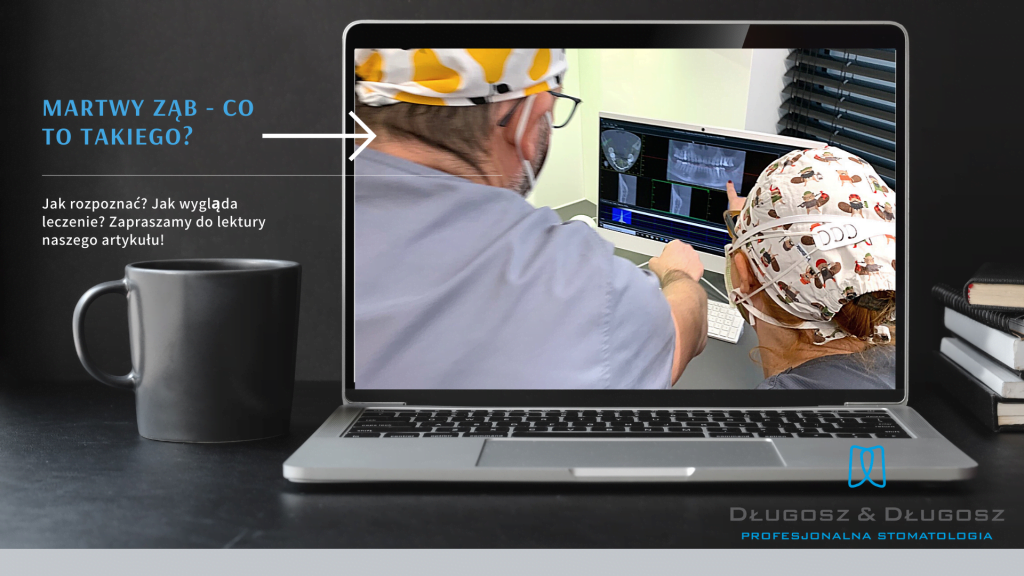Dead tooth – what does it mean? How to recognize and treat it?
A healthy, live tooth is made up of hard tissues, i.e. enamel and dentin, which surround and protect the pulp tissue inside the tooth. The pulp is a highly innervated tissue that has nutritional and sensory functions. It lets you know when a tooth hurts, it allows you to feel heat/cold and pressure.

So what is a dead tooth?
It is a tooth in which the pulp tissue dies as a result of pathological factors, such as deep caries or mechanical trauma. Early diagnosis of pulp necrosis may be difficult for the patient, because the initial stage does not produce any symptoms. Only after some time, when the inflammation lasts, there are symptoms such as:
- severe pain, which may radiate to neighbouring teeth,
- severe hypersensitivity to thermal changes,
- swelling, and even abscess.
When the pulp tissue dies completely, the tooth may change its appearance – it becomes more dull and may also change colour to blue. It then stops responding to thermal or sensory stimuli.
How to treat a dead tooth? Should it be removed or treated?
Definitely start treatment! A good dentist will certainly try to save it. Thanks to root canal treatment under a microscope and subsequent restoration of the tooth, we can save it. Root canal treatment, or endodontic treatment, involves the removal of dead, infected tissue, thorough cleaning of the canals, and then precise filling. Thanks to microscopic endodontics, this procedure is performed with over twenty-fold magnification – increasing its precision, while minimizing the possible risk of complications.
Remember that you should not put off your visit to the dentist – the sooner we start root canal treatment, the greater the chance that we will save the tooth from being extracted.